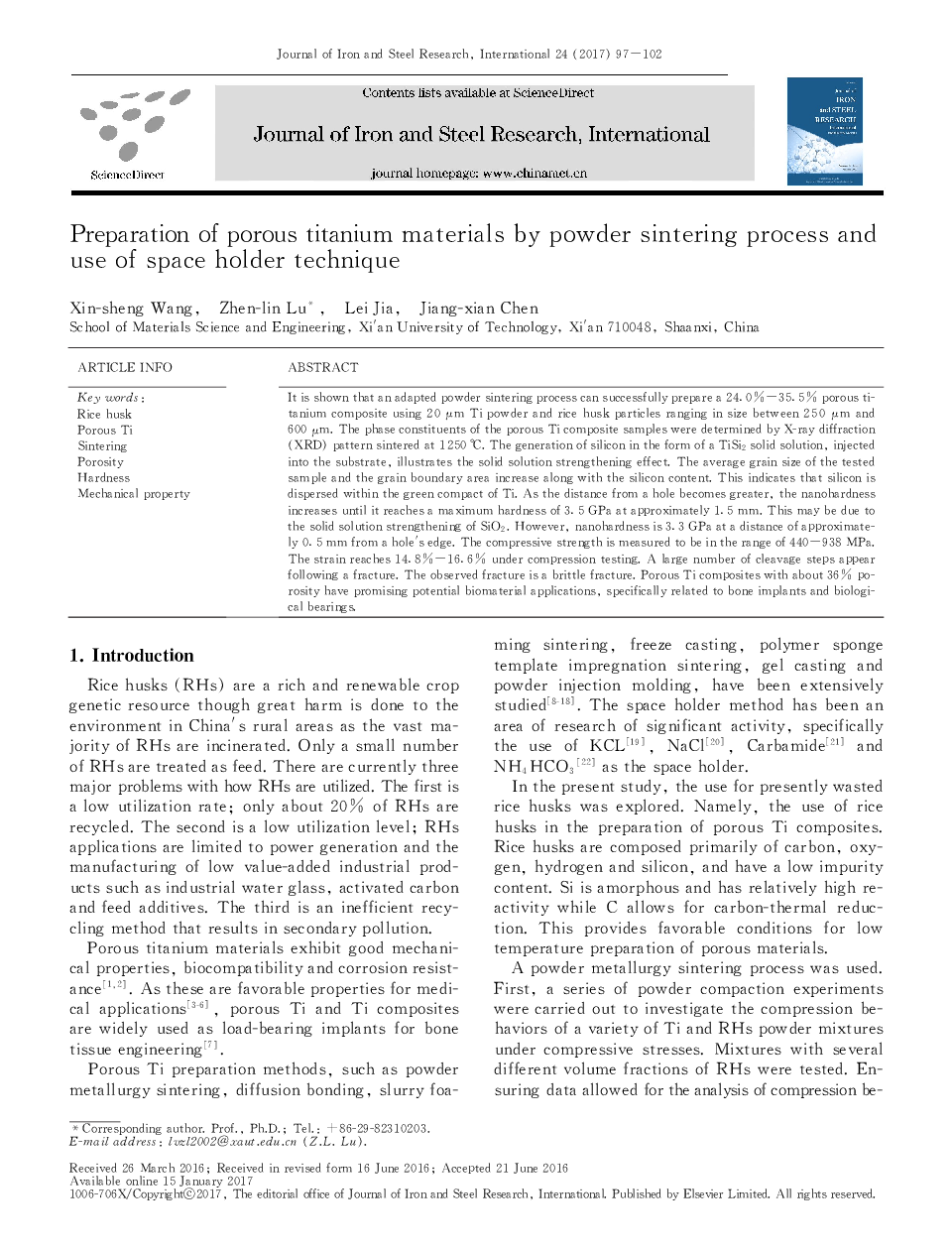| Article ID | Journal | Published Year | Pages | File Type |
|---|---|---|---|---|
| 8004381 | Journal of Iron and Steel Research, International | 2017 | 6 Pages |
Abstract
It is shown that an adapted powder sintering process can successfully prepare a 24.0%-35.5% porous titanium composite using 20 μm Ti powder and rice husk particles ranging in size between 250 μm and 600 μm. The phase constituents of the porous Ti composite samples were determined by X-ray diffraction (XRD) pattern sintered at 1250 °C. The generation of silicon in the form of a TiSi2 solid solution, injected into the substrate, illustrates the solid solution strengthening effect. The average grain size of the tested sample and the grain boundary area increase along with the silicon content. This indicates that silicon is dispersed within the green compact of Ti. As the distance from a hole becomes greater, the nanohardness increases until it reaches a maximum hardness of 3.5 GPa at approximately 1.5 mm. This may be due to the solid solution strengthening of SiO2. However, nanohardness is 3.3 GPa at a distance of approximately 0.5 mm from a hole's edge. The compressive strength is measured to be in the range of 440 - 938 MPa. The strain reaches 14.8% - 16.6% under compression testing. A large number of cleavage steps appear following a fracture. The observed fracture is a brittle fracture. Porous Ti composites with about 36% porosity have promising potential biomaterial applications, specifically related to bone implants and biological bearings.
Related Topics
Physical Sciences and Engineering
Materials Science
Metals and Alloys
Authors
Xin-sheng Wang, Zhen-lin Lu, Lei Jia, Jiang-xian Chen,
